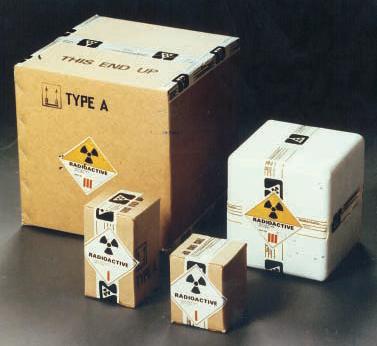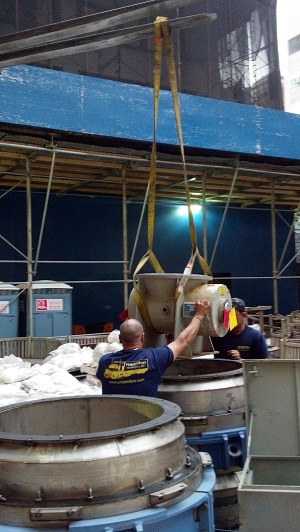Hi, Dr. Zoomie – got a question for you. We have some small radioactive sources in some soil gauges that we have to drive from job site to job site. I just took over as RSO and my boss told me to make sure we’re doing the transportation right. Can you tell me what I should be looking out for?
Wow – it might not seem like it, but there’s a LOT that goes into this; too much for a single posting. So let me give a sort of overview here and then I’ll get into some of the details later (there have been a lot of transportation questions lately, so it seems like a good topic to cover in some detail). For starters, the regulations you’ll need to follow are scattered through the Code of Federal Regulations – specifically, Title 49, Parts 171-173 (of 49 CFR 171-173).
49 CFR 171
https://www.govinfo.gov/content/pkg/CFR-2024-title49-vol2/pdf/CFR-2024-title49-vol2-part171.pdf
49 CFR 172
https://www.govinfo.gov/content/pkg/CFR-2024-title49-vol2/pdf/CFR-2024-title49-vol2-part172.pdf
49 CFR 173
http://govinfo.gov/content/pkg/CFR-2024-title49-vol2/pdf/CFR-2024-title49-vol2-part173.pdf
So – first of all – if you are transporting or shipping radioactive materials (including your soil density gauges) then you or somebody else at your company is required to attend training in radioactive materials transportation every 3 years. If you don’t have any records showing anybody attending this training then this is something you need to take care of as soon as you can. Incidentally, there are a lot of hazmat transportation courses and most of them include a little bit of information on radioactive materials. But if you are driving these sources around every day then I would strongly advise taking a class that focuses on radioactive materials transportation and shipping since those classes tend to be taught by people who really know the details of radioactive shipments (and believe me, there are LOTS of details).
Second, I also need to differentiate between transportation and shipping. If you are driving the radioactive materials around yourself then you’re transporting radioactive materials. If you’re packaging them and handing them off to somebody else then you’re shipping. But either way you need to have the training every three years. On – you only have to worry about this if your radioactive materials are going to be moving by vehicle over public roads. At a university I used to work for we would transfer radioactive materials by walking them over to the appropriate building – so no need for special packaging or anything. And if you’re moving the materials over, say, an industrial campus that the public can’t access then you also don’t need to worry since these are not public roads.

Whether you’re transporting or shipping you need to make sure that the materials are properly packaged. There are three main categories of radioactive materials – Type A, B, and C. Type A quantities of radioactive materials are to be packaged in Type A packages; Type B quantities must be transported in Type B packages, and Type C quantities are transported in (wait for it…) Type C packages – it makes an odd sort of sense. Type A packages don’t need to be very elaborate – some Type A quantities are shipped in strong cardboard boxes sealed with tough packing tape. By comparison, Type B packages are virtually indestructible – there are some videos online that show not only the size of these things, but some of the testing done to confirm that they’ll keep truly dangerous amounts of radioactivity safe, even under dire circumstances. Shown here are a stock photo of a Type A container and a photo I took of a Type B container that was used to transport a high-activity radioactive source – although the Type B container isn’t fully assembled (the two pieces shown are bolted together, one atop the other) you can get an idea of the size and ruggedness of these things.

One big thing to remember – with any package – is that it has to be certified as a Type A, B, or C package! And unless it’s certified then you can’t use it. Now, in your case, your gauge and shipping case (if it came with one) have already been certified as a Type A container so you don’t need to worry about this. But anyone reading this who is shipping or transporting, say, radioactive samples, radiopharmaceuticals, and that sort of thing…well, you might be tempted to just re-use the Type A package you received your last shipment in. And you would be wrong to do so since you haven’t certified the package the way that you normally use it, pack it, and seal it.
You also have to make sure the package is properly labeled – the categories here are White I, Yellow II, and Yellow III depending on the radiation dose rates you measure a meter away from the package (the transport index) and on the package surface. There’s some good information about all of this in a number of places online – one the most easily understandable is on a site maintained by the National Institutes of Health.
There’s a lot more than this on the topic of transportation and shipping, but this is a good place to stop for this overview. As I said, I’ve had a number of other questions so stand by for more details on labeling, packaging, transportation index, and so forth. But this should get you started. If you’re interested in attending a training course Nevada Technical Associates conducts courses on the topic of Transportation of Radioactive Materials and holds courses several times a year.